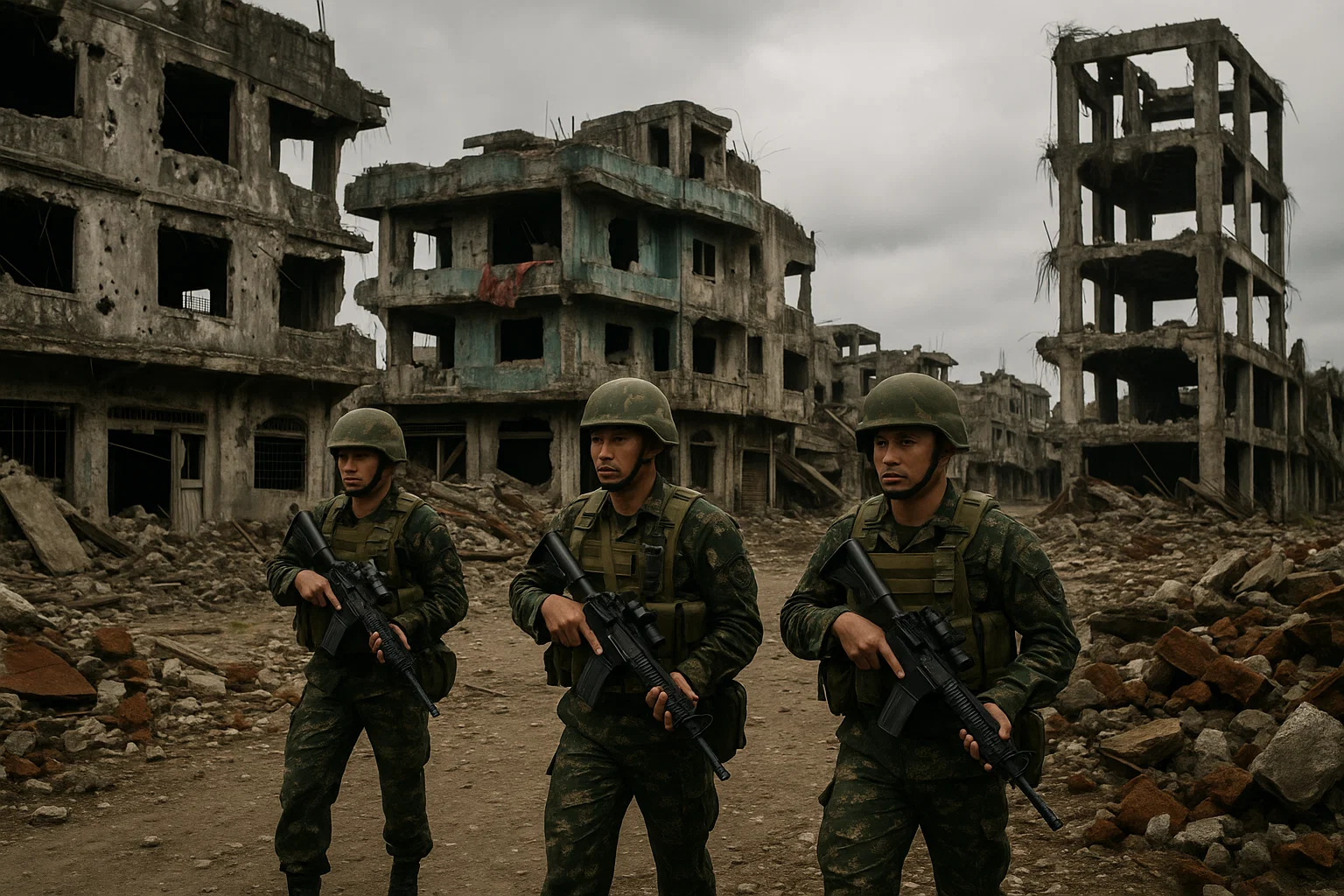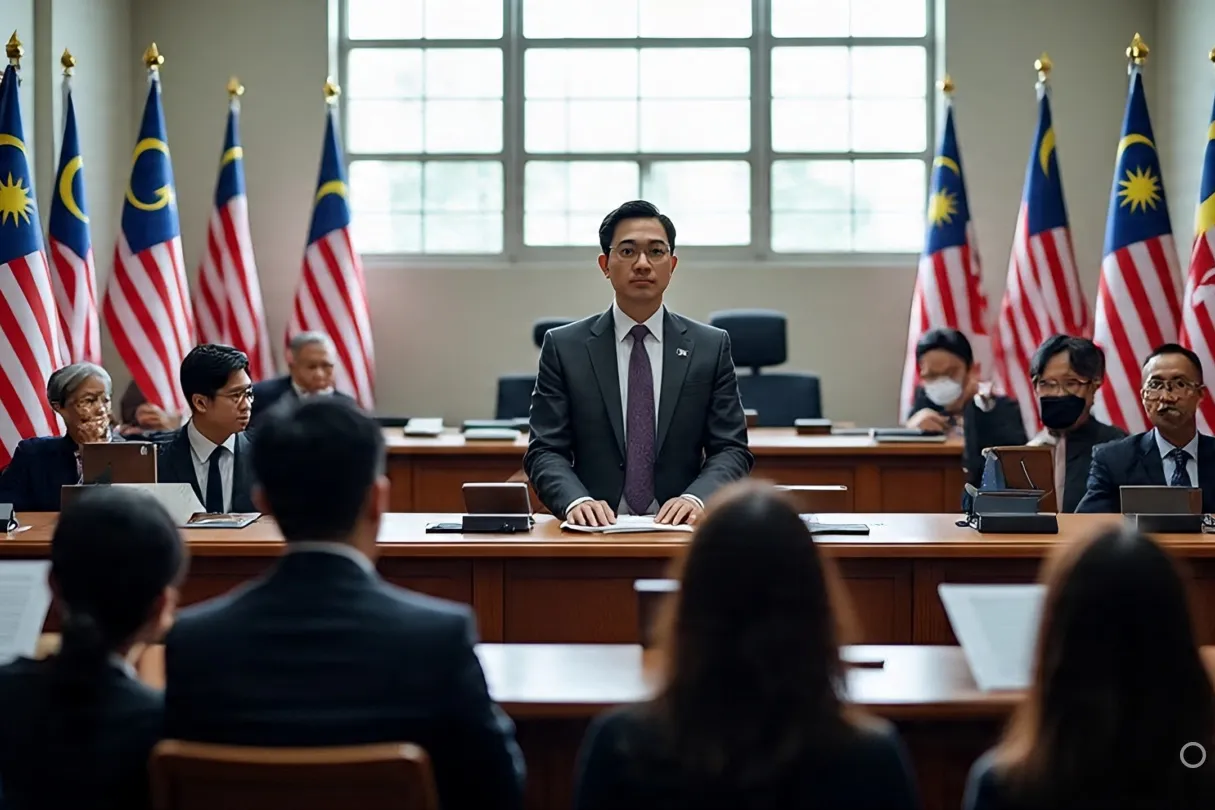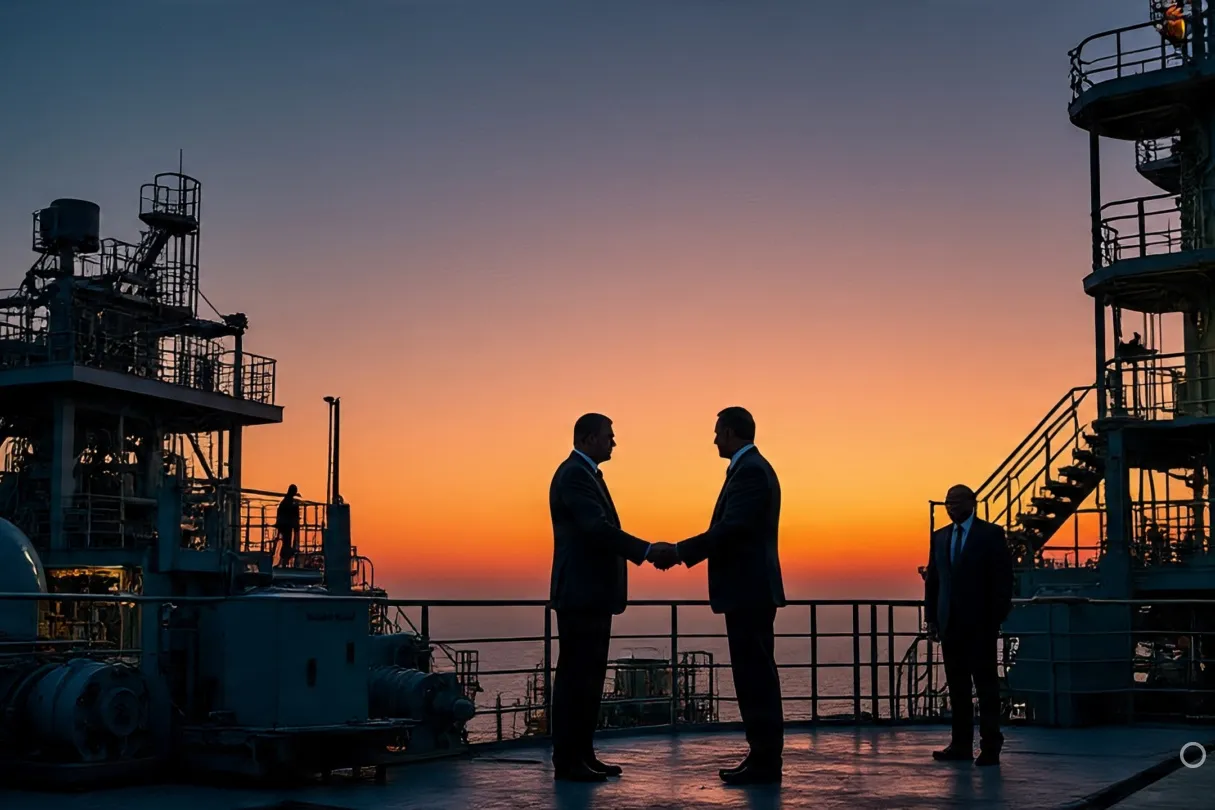When gunfire first cracked through the streets of Marawi City on May 23, 2017, many residents thought it was just another flare-up between government troops and local armed groups. Within hours, it became clear that this was something different — a full-scale assault that would transform the lakeside capital of Lanao del Sur into the stage for the longest urban battle in Philippine history. Over five months, the siege would leave the city in ruins, displace more than 350,000 residents, and raise troubling questions about how heavily armed militants managed to dig in so deeply under the nose of the state.
- 🌏 Marawi Before the Siege
- 📅 Timeline of the Siege — From Infiltration to Liberation
- 🎯 Main Actors in the Marawi Siege
- 🔫 Allegations of Arms Smuggling Routes
- 💰 Reports of Ransom Payments and Militant Funding
- 🕵 Alleged Insider Involvement
- 🏚 Impact on Residents — Displacement and Trauma
- 🪖 Government Response and Military Strategy
- 🛠 Challenges in Post-Siege Recovery
- 🏗 Reconstruction Years Later
- 📌 Frequently Asked Questions (FAQ)
- 🕯 Final Reflection
🌏 Marawi Before the Siege
Before the fighting, Marawi was known as the country’s largest Muslim-majority city, with a rich cultural heritage and bustling trade. The city’s economy revolved around small businesses, the Lake Lanao fishing industry, and traditional markets. Politically, however, the city sat in a fragile balance — local clans wielded significant influence, while various armed groups operated in the shadows. Criminal networks and extremist factions occasionally clashed with security forces, but large-scale violence was rare.
The years leading up to 2017 saw the rise of the Maute Group, a local militant faction with alleged ties to the Islamic State (ISIS). Despite occasional skirmishes and arrests of key members, the group’s ability to stockpile weapons and attract foreign fighters hinted at deeper systemic problems. Rumors circulated about corrupt officials turning a blind eye in exchange for payoffs. Others whispered about arms smuggling routes running through Mindanao’s porous maritime borders — routes that could funnel in rifles, ammunition, and explosives without detection.
By early 2017, intelligence suggested that the Maute Group and allied militants were preparing for something big. Few imagined that “something” would involve turning an entire city into a battlefield.
📅 Timeline of the Siege — From Infiltration to Liberation
Table 1: Siege Timeline and Major Events
| Date | Event Description |
|---|---|
| May 23, 2017 | Militants attack Marawi after failed military raid to capture Isnilon Hapilon |
| Late May 2017 | Militants take control of strategic buildings, raise ISIS flags |
| June–July 2017 | Heavy fighting in urban areas; reports of hostage executions |
| August 2017 | Government retakes several districts |
| October 16, 2017 | Hapilon and Maute brothers killed |
| October 23, 2017 | Government declares Marawi liberated |
The siege began after a military operation to capture Isnilon Hapilon, the ISIS-designated emir in Southeast Asia, went awry. Instead of a quick raid, troops found themselves pinned down by hundreds of militants entrenched in the city. Militants swiftly took over key buildings, including the city jail and hospital, and began executing civilians who refused to pledge allegiance to ISIS.
🎯 Main Actors in the Marawi Siege
- Maute Group — Local extremist faction with ISIS links
- Abu Sayyaf Group (ASG) — Provided manpower and operational leadership
- Foreign Fighters — From Malaysia, Indonesia, and the Middle East
- Philippine Military — Armed Forces of the Philippines (AFP) conducting clearing operations
- Philippine National Police (PNP) — Urban combat support and security
🔫 Allegations of Arms Smuggling Routes
As the smoke cleared over Marawi, investigators began piecing together how militants had acquired such an arsenal. Government forces recovered thousands of firearms, RPGs, and tons of ammunition from militant strongholds. Many were military-grade weapons — the kind not easily obtained through local black markets.
Security analysts pointed to several possible arms smuggling corridors:
- Maritime routes from Sabah, Malaysia, into Sulu and onward to Lanao del Sur
- Shipments concealed within legitimate cargo to Mindanao ports
- Diversion of military or police weapons through corrupt insiders
Multiple witnesses claimed seeing crates unloaded at night from boats along Lake Lanao months before the siege. Some suspected that local officials or rogue elements in security agencies facilitated the movement of arms in exchange for cash.
💰 Reports of Ransom Payments and Militant Funding
The Marawi siege arms smuggling narrative is incomplete without examining the militants’ funding. Intelligence reports suggested that ransom money from previous kidnappings by Abu Sayyaf helped finance the operation. Payments from high-profile hostage cases — including foreign captives — allegedly flowed into the purchase of weapons, communication equipment, and even bribes.
Table 2: Alleged Funding Sources for the Militants
| Source of Funds | Description |
| Kidnapping for ransom | Millions paid by families and foreign governments |
| Local extortion | “Revolutionary taxes” imposed on businesses |
| Foreign donations | Support from ISIS-linked networks abroad |
| Arms trafficking profits | Revenue from reselling smuggled weapons |
🕵 Alleged Insider Involvement
Perhaps the most controversial aspect of the siege is the allegation of inside jobs. Some displaced residents and military sources privately claimed that militants had advance knowledge of troop movements. Others questioned how they managed to construct defensive positions and stockpile food and ammunition without raising alarms.
Leaked intelligence suggested that sympathizers within local government units — and possibly security forces — may have provided logistical support. Officially, the AFP and PNP have downplayed these allegations, but multiple investigations remain ongoing.
🏚 Impact on Residents — Displacement and Trauma
The human cost of the siege was staggering. Over 350,000 residents fled their homes, many seeking refuge in overcrowded evacuation centers. Families were separated; livelihoods vanished overnight. Survivors spoke of dodging sniper fire, wading through rubble, and leaving behind everything they owned.
Years later, the trauma persists. Children who grew up during the fighting struggle with nightmares and anxiety. Some families still live in temporary shelters, caught in the slow machinery of rehabilitation programs.
🪖 Government Response and Military Strategy
The military faced a grueling urban warfare environment. Clearing militants from concrete buildings required heavy artillery, airstrikes, and house-to-house fighting. This approach inevitably destroyed much of the city’s infrastructure. While the AFP ultimately declared victory, critics argue that the scale of destruction could have been mitigated with better pre-siege intelligence and coordination.
Government forces also rescued hundreds of hostages and civilians trapped behind militant lines. But questions remain about why initial warnings of militant buildup were not acted upon sooner.
🛠 Challenges in Post-Siege Recovery
- Slow disbursement of rehabilitation funds
- Land ownership disputes delaying reconstruction
- Incomplete clearing of unexploded ordnance
- Limited livelihood opportunities for returnees
- Lingering distrust between residents and authorities
🏗 Reconstruction Years Later
As of 2025, parts of Marawi’s “Ground Zero” remain under reconstruction. Some families have returned, but others are still displaced. The government’s Task Force Bangon Marawi cites complex land issues and funding shortfalls as key obstacles. International donors have pledged support, but progress remains uneven.
Local NGOs stress that rebuilding physical structures is only part of the recovery. Restoring trust, addressing mental health, and ensuring accountability for alleged insider roles are equally vital.
📌 Frequently Asked Questions (FAQ)
Q: Was there proof of insider involvement in the siege?
A: No conclusive public evidence has been presented, but multiple intelligence reports and testimonies suggest the possibility of insider facilitation. Official investigations remain classified.
Q: How many families are still displaced?
A: As of 2025, around 20,000 individuals — representing thousands of families — remain in temporary shelters or with relatives, awaiting permanent housing.
Q: Did ransom payments directly fund the siege?
A: Intelligence agencies believe that ransom money from previous Abu Sayyaf kidnappings contributed significantly to the militants’ resources, alongside funds from arms trafficking and foreign support.
Q: How did arms smuggling routes operate?
A: Smugglers allegedly used maritime routes from Malaysia, hidden compartments in cargo, and corrupt channels within the Philippines to move weapons into Lanao del Sur.
Q: What lessons did the military learn from Marawi?
A: The siege underscored the need for better intelligence coordination, rapid deployment in urban warfare, and tighter control of arms trafficking.
Q: Has reconstruction been completed?
A: No. While progress has been made in rebuilding public facilities, many residential areas remain in ruins, and livelihood restoration is ongoing.
Q: How did the siege affect Mindanao’s security?
A: It heightened military presence in key cities, increased surveillance, and spurred new counterterrorism programs, but also deepened distrust in some communities.
🕯 Final Reflection
The Marawi siege was more than a battle; it was a test of the Philippines’ resilience and its ability to confront both external threats and internal weaknesses. From arms smuggling networks to suspected insider roles, the siege revealed vulnerabilities that extend beyond the city’s walls. For survivors, the fight is far from over — it continues in the struggle to rebuild homes, lives, and trust.
As the ruins of Marawi slowly give way to new structures, one question remains: Will the lessons learned be enough to prevent another city from falling under the shadow of war?




